
|
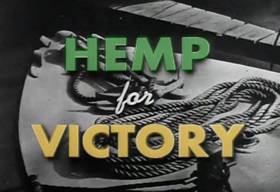 The film “Hemp For Victory” and the reality of Library censorship in the United States |

|
|---|
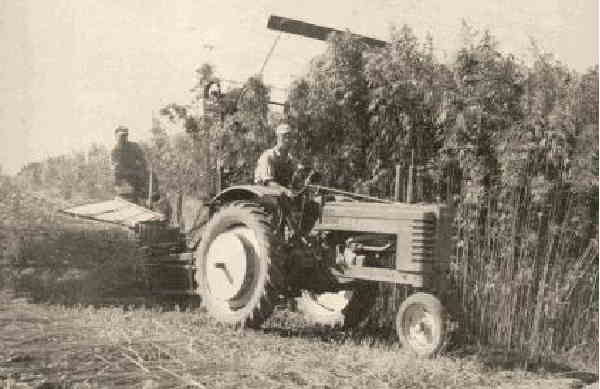
CENSORSHIP USA
The film “Hemp For Victory” and the reality of Library censorship in the United States.
ARTICLE SUMMARY:
Library censorship, while still commonly thought of as something occurring only in totalitarian societies, is now a major problem here in the United States. This article, instead of dealing with vague generalities, selects one example of such censorship, establishing not only its occurrence, but that it was done so with the full cooperation of various high-level officials within our government. In addition, it also provides a practical yet easy to implement solution to end the practice.
---------------
C E N S O R S H I P: It appears that the mere mention of the word brings shivers to many, but especially so to librarians. Conjuring up images of Nazi storm troopers throwing books unto bonfires, or of fascist holy warriors destroying anything that didn’t quite fit in with their religious edicts. And while most of us would like to believe that America is different, that censorship is something that only happens in a socialist or totalitarian republics, the reality is that censorship has/is happening right here in the good old U.S. of A., and in fact is quite prevalent. Nothing provides a better example than the movie “Hemp For Victory”, which was not only banished from Library Index files, but almost from existence.
However, before going any further, I wish to make it clear that we are not talking about child pornography or of troop movements in a time of war. Nor one showing anarchists the best way to manufacture bombs. But instead we are dealing here with the censorship of simply an agricultural film. One film essentially doing nothing more dangerous than showing farmers the best way to grow an agricultural crop, and one produced by our own ‘Federal Department of Agriculture’ at that. Granted the crop is ‘Industrial Hemp’, a cousin to Medical Marihuana, but still just an agricultural film. --- Thus we are talking about censorship in its purist form, that being of someone (or something) within our federal government simply trying to hide something.
---------------
HISTORICAL BACKGROUND:
Most of us have seen the movie “Reefer Madness” so we’re all familiar with the hysteria campaign that prevailed in the 1930’s. However, many of us may not be fully aware of the vital importance that Hemp (aka Marihuana) once played in our country’s history. So important in fact that it was even against the law in some of the colonies NOT TO GROW IT. [1] That’s right, if you didn’t grow the marihuana plant, you would have been seen as a criminal under the law. However, due mostly to economical factors, starting around the 1870’s, our country’s Home Grown Hemp Industry started a slow but steady decline. Simply put, after the abolition of slavery, American farmers just couldn’t economically compete with the cheap foreign imports flooding the nation. The following U.S. agricultural statistics speak for themselves.
| YEAR | ACREAGE | Lbs. |
|---|---|---|
| 1859 | - | 148,986,000 |
| 1869 | - | 25,492,000 |
| 1879 | - | 10,022,000 |
| 1889 | 24,881 | 25,636,880 |
| 1899 | 16,042 | 11,750,630 |
| 1909 | 7,647 | 7,483,293 |
| 1919 | 7,252 | 7,148,215 |
| 1929 | 1,644 | 1,195,640 |
As can be seen, America’s Home Grown Hemp Industry was already on the decline and then as if to add insult to injury came what is now referred to as the Reefer Madness Hysteria Campaign. Soon newspaper stories abounded about half-naked girls jumping out of fifth story windows, or of young boys grabbing axes and chopping their parents to death, . . . All of course under the influence of some deadly new drug known as “Marihuana, the Assassin Of Youth.” In other words, it was one of the worst P.R. campaigns to hit any industry, especially one that was in decline. Little wonder then that by the time the Second World War broke out very few American farmers were still cultivating the plant. This despite that fact that our Industries were still making extensive use of cordage fibers and were now being forced to import more and more of it by the ton.
---------------
THEN PEARL HARBOR STRUCK:
It’s presumed that the reader is familiar with Pearl Harbor and our entry into the war. However, the reader may not be familiar with just how the Axis powers started to play havoc with our war materials. --- For the various reasons already stated, before the war much of our cordage materials, now desperately needed by our military for everything from navel gaskets to parachute harnesses, was being imported from overseas. Specifically from:
- ITALY: - which just four days after Pearl Harbor declared war on us
- THE BALKANS: - which were now fully under Axis Control
- THE PHILIPPINES: - which fell under Axis control shortly after we entered the war
- INDONESIA: - which also fell to the Axis in short order
- INDIA: - which was a large producer of Jute, but due to Axes submarine activity (operating out of Singapore) could not be relied on for supplies.
- LATIN AMERICA: - proved a valuable source, however due to Axes submarine activity in the Caribbean could not be consider a reliable one.
A factor which brings us to the very reasoning of why the Film ‘Hemp For Victory’ was produced in the first place. First, there was a need to calm everyone down and give respect to an otherwise plant in ill repute. Next, it was to instill patriotic values – “our founding fathers grew hemp, and for the war effort so should you”, kind of thing. Last, but not least, the film was needed literally to teach farmers (many new to hemp production) how to cultivate the crop.
In all of the above, the film did a good job, unfortunately, for those wishing to maintain the Marihuana laws as is, it did too-good of a job in doing so. And with the war now over, it became what can only be termed, a dangerous film. Especially after the Reefer Madness campaign had once more been resumed.
According to the (1945) ‘EDUCATIONAL FILM GUIDE
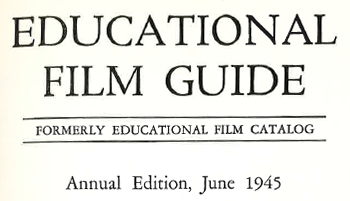
|
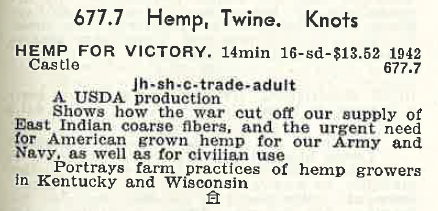
|
|---|
Castle 677.7 Jh-sh-c-trade-adult
A USDA production -- Shows how the war cut off our supply of East Indian coarse fibers, and the urgent need for American grown hemp for our Army and Navy, as well as for civilian use. Portrays farm practices of hemp growers in Kentucky and Wisconsin
THEN THE ERASURE OCCURRED:
THE PAST WAS ERASED,
THE ERASURE WAS FORGOTTEN,
THE LIE BECAME THE TRUTH
George Orwell (1984)
---------------
HOW THE FILM WAS RELOCATED:
The story as I first heard it (it changes with the storyteller) was that a couple of pro-hemp individuals were traveling around the country speaking before audiences about re-legalizing industrial hemp. It was at one such meeting that a couple of older farmers came up to them and told them about an old film that they had seen during the war, something called “Hemp For Victory”. An incident that was repeated at another location, and another, repeatedly). In fact, it was repeated so many times that these two guys began a search for the film, where they ran right into a brick wall: How do you obtain a copy of a film that everyone (including librarians) were telling you doesn’t exist?
According to the “Great Book Of Hemp”: [2A]
“(they) . . asked every agency they could think of about the film and were met with the same answer, typified by this response from John Van Calcar of the Agricultural, Stabilization, and Conservation Service:And who was to say that he was wrong? After all every library index and catalog they were able to obtain simply carried no references to the film, none-what-so-ever. They even went so far as to go to the Library of Congress (Washington DC) to see what they could find there. But again, nothing. In frustration, they were just about to give up when one of the searchers got an idea. Instead of looking only through current library indexes, he inquired if the Library of Congress had any older indexes, one’s from the 1940’s or 50’s. To which the librarian (the unsung hero of this story), tells them yes, and after being shown where they were, they had no trouble locating the film. Yes it did exist and there it was all along. . . the story then goes on to tell about how (with the catalog’s stated information) they were finally able to obtain (maybe) the last copy of the film still in existence.“We contacted the Washington DC office of the Department of Agriculture and also the Federal Audio Center and have been unable to locate any film with the title “Hemp for Victory” that was produced by any department of the federal government.”
Library of Congress Catalogs
The National Union Catalog A Cumulative Author List Representing Library of Congress Printed Cards and Titles Reported by Other American Libraries
COMPILED BY THE LIBRARY OF CONGRESS WITH THE COOPERATION OF THE COMMITTEE ON RESOURCES OF AMERICAN LIBRARIES OF THE AMERICAN LIBRARY ASSOCIATION
1953-1957 Volume 28 MOTION PICTURES AND FILMSTRIPS (1958)
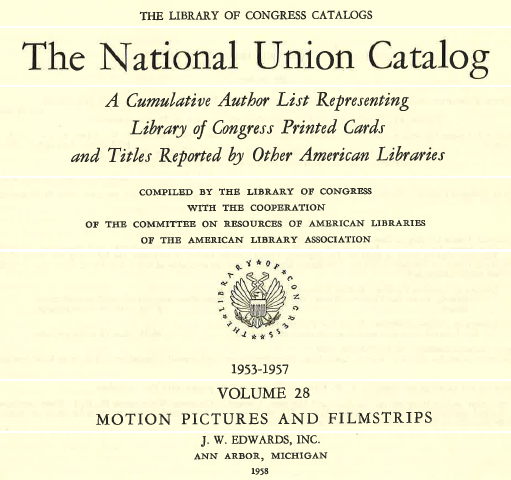
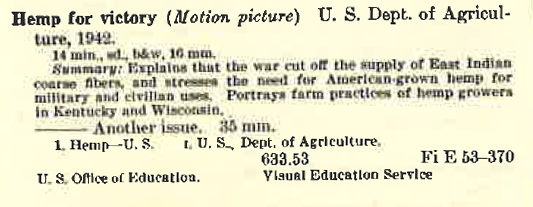
HEMP FOR VICTORY (Motion picture) U.S. Dept., of Agriculture, 1942.
14 min., wd., b&w, 16 mm
Summary: Explains that the war cut off the supply of East Indian Coarse fibers, and stresses the need for American grown hemp for military and civilian uses. Portrays farm practices of hemp growers in Kentucky and Wisconsin.
---------- Another issue, 35 mm. 1 Hemp -- U.S. 1 U.S., Dept. of Agriculture. 638.53 Fi E 539370
U.S. Office of Education. Visual Education Service
ESTABLISHING THAT CENSORSHIP OCCURRED
OUR LIBRARIES IN DENIAL
-- IT CAN’T HAPPEN HERE
One is tempted to feel sorry for, or at least sympathetic to, these people who wish to stay in denial. After all, is this not the good old U.S. of A., a place where freedom of speech is taken for granted and as a Frank Zappa song once went;
“I’m Telling You My Dear, It Can’t Happen Here“
Yet, here we are talking about the subject and not in a future tense, one referencing a potential Orwellian (1984) society, but one rooted in the past and even present tenses. This forces us to acknowledge that the situation is already here among us. Thus, at least from a psychological standpoint, is the reason why I for one feel some sympathy for these deniers. However, we must not forget that among them (like wolves in sheep’s clothing) lie not the victims of censorship, but the censors themselves.
Therefore (before going on), our need to examine their viewpoints, their reasoning for being in denial, which even I must admit, at least on the surface are quite strong, and runs something as follows:
---------------
THE DENIALS
BEFORE THE FILM WAS PHYSICALLY LOCATED
That no such movie was ever made because:
- - That the Department of Agriculture is officially a part of the U.S. Government, which emphatically stated that they had made no such film and knew nothing of it. After all, would our own government lie to us?
- - That this is America and that the whole Idea of censorship here in this country was ridiculous. Our government simply doesn’t go around deliberately censoring (of all things) an agricultural film. Period.
- - That no library indexes or catalogs of any kind shows or makes any references to such a film. Therefore proof that NO SUCH FILM EXISTS.
THE DENIALS
AFTER THE FILM WAS ACTUALLY LOCATED:
That the film was never censored, and that this is all a big mistake and for two reasons:
REASONING NUMBER 1:
- - That the movie is obviously a Hoax. That it was fabricated and made to look like an official government film by a group of unwashed hippies somewhere to embarrass the U.S. Government.
- - That even if something with a title of “Hemp For Victory” was actually made, that it must have ONLY been making reference to a couple of still-photos used for public display, not an actual movie as was being claimed by those unwashed hippies.
That there must have been some kind of BIG misunderstanding. That the film was never actually censored because:
- - That while true, it appears that the film did disappear from the index catalogs, (so were other references to numerous other things). Simply put, all index catalogs get cleaned up every now and then. This is part of normal library operations, so its disappearance from the catalogs means nothing.
- - WHY? Just what motive would the Department of Agriculture have to censor one of their own films? After all, they look after plants, not narcotics laws.
- - That even if the Dept. of Agriculture did wish to censor the film, logic and reason dictate that it would take a major conspiracy, one involving numerous governmental agencies and higher-ups to do so. Something that given a democracy like ours would be all but impossible. Therefore, the very thought of a deliberate conspiracy can only be thought of as ludicrous.
---------------
AND YET IT HAPPENED:
Here I will establish for a fact that the film “Hemp For Victory” did indeed exist, was produced by the U.S. Government and later on (after the war) an almost successful attempt to censored it was made. Last of all, that it was indeed done so on orders from very high level governmental officials.
THE ERASURE WAS FORGOTTEN,
THE LIE BECAME THE TRUTH
George Orwell (1984)
That the film existed as well as the fact that it was produced by the U.S.D.A. (U.S. Department of Agriculture), is no longer in doubt. Proof of this can be found in the numerous WW-II era newspaper accounts and advertisements about the movie. The following taken from the Boone (City, Iowa) News Republican serves as a good example:
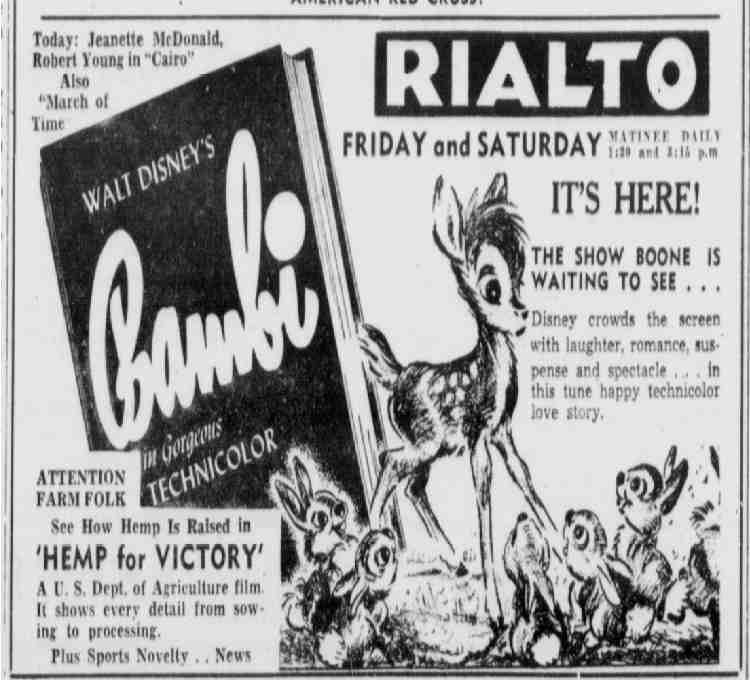
BooneNewsRepublican1943-02-03p2So obviously, according to this and other newspaper accounts at the time, such a film did in fact exist. AND upon closer examination the article (actually a promo write-up in exchange for buying advertising), reveals the following:
HEMP FILM TO BE SHOWN HERE
“. . . A real opportunity for those Boone county farmers who have signed government contracts to grow hemp this year for the war, to learn vividly all the stages connected with the crop ---from the planting of the seed to the delivery to the processing mill—will be afforded Friday and Saturday. Feb 5 and 6. at the Rialto theatre in Boone.
A government-produced motion picture entitled “Hemp For Victory” will be shown at the Rialto on those two days, C. E. Judd, county extension director, announced this week.
“I feel this would be an excellent opportunity for those who have contracted to grow the crop to see exactly all the work involved and learn the steps from the planting to the actual use of the hemp as rope in the war,” Judd said.
’The picture runs 14 minutes, and is a most complete and comprehensive visual ‘text book’ on the subject of hemp growing. I urge every farmer planning to grow hemp to see this picture if he can do so,” Judd added.
How much seed to sow, how to put the crop in, how to determine when it is ready for harvest, how to use the different types of harvesting machinery, the turning and “retting process" which the hemp must undergo after being cut . . . these are some of the vitally important things which will be shown in this U. S. Department of Agriculture film, S. N. Fangman, manager of the Rialto pointed out. . . “
- That the film ‘Hemp for Victory’ was being shown in theaters (mostly around Hemp growing farming communities) during the war; -- Meaning the film did actually exist.
- That the film was being shown in February of 1943, which would fit it right into its proper time frame.
- That the film was indeed made by the ‘Federal Department of Agriculture.’
- That it was approximately 14 minutes, which would make it much too long for a mere couple of still photos on the subject. Yet while short, this obviously was a motion picture in its own right.
- But most important of all, was the content of the film, note that it dealt with:
“ . . to learn vividly all the stages connected with the crop— from the planting of the seed to the delivery to the processing mill . . an excellent opportunity for those who have contracted to grow the crop to see exactly all the work involved and learn the steps from the planting to the actual use of the hemp as rope in the war, . . . How much seed to sow, how to put the crop in, how to determine when it is read y for harvest, how to use the different types of harvesting machinery, the turning and “retting process" which the hemp must undergo after being cut ”
This is probably the most important point to note, because IF THE FILM had been a Hoax, one put together by the unwashed hippie many years after the war in order to embarrass the government, then why does its content match exactly what was being said about it back during the war? Or for that matter if it was a hoax, then why didn’t the U.S.D.A. denounce it as such? After all, isn’t it against the law to claim that you’re the U.S. Government (as the film does) if you’re not? The reason is obviously because the film that was eventually found (maybe the very last copy then in existence) is authentic.
YET NONE DARE CALL IT CONSPIRACY:
Thus far (using just one of many old newspaper articles), we’ve established that the movie “Hemp For Victory” actually did exist and was produced by the U.S. Government during the war to assist tens of thousands of farmers who were growing hemp at the time. Now I will continue to establish the fact that the film of-and-by-itself was the object of a conspiracy to affect CENSORSHIP. And, that this conspiracy was spawned with the complicity of individuals at the highest levels of our Federal Government.
Here, it is best to look at the main governmental agency involved, that being the ‘Dept. of Agriculture.’ Which upon first glance is as innocent looking an agency if ever there was one. Tasked with keeping agriculture records and helping farmers grow crops, the only conspiratorial/emotional thoughts that come to ones mind are those of boredom. Which is probably why they’ve been able to get away with it for so long. Who would suspect an agency equivalent to Pop-Eye & Olive Oyl’s little baby ‘Sweet Pea’?
However, unlike ‘Sweet Pea’, this agency appears to have quite a very long and checkered past of skullduggery with a long history of censorship. The following is presented as specific examples of such:
As shown on our webpage: --- http://antiquecannabisbook.com/chap03/FarmBulletin/CensorFarmBull663.htm
Here we have documented a specific case, where in the year 1935, the DEA (at the time known as the Bureau of Narcotics) wrote an internal memo to the U.S.D.A, specifically stating the following:
“Sir: The Narcotic Bureau of this Department has been advised that your Department has issued some bulletins, evidently for the information of farmers, which give information upon the manner of cultivating within this country the opium poppy and Cannabis sativa.This internal memo, which referenced a 1935 ‘Dept. of Agriculture’ publication entitled, “Drug Plants Under Cultivation” (Bulletin No. 663), had numerous pages devoted to the growth of Medical Cannabis (at the time a recognized established medicine). However, later on that year, the U.S.D.A reworded the bulletin’s contents, in effect, removing all references to Cannabis. --- aka CENSORSHIP. A situation, which as the example below shows, still follows it to this very day:
May I request to be advised whether any such publications have been issued within the past several years? This Department, through its Narcotic Bureau, has sought to discourage at least under present conditions of supply, and respectfully urges that, in the interest of securing adequate control of the drugs derived from these plants, that no bulletin which may encourage such cultivation be issued. “
USDA Whistleblower Claims Censorship Of Pesticide Research [3]Additionally the U.S.D.A., (recalling that the original purpose for our Marihuana laws was to keep blacks/browns in their place) has a long established history of racial discrimination – a history that it is still following to this very day.
“A senior scientist at the U.S. Department of Agriculture filed a whistleblower complaint on Wednesday accusing the federal agency of suppressing research . . . more“
The Real Farm Subsidy Scandal?But most damning of all, although a little known fact, the D.E.A. itself (then known as the ‘Bureau of Chemistry’) was at one time a part of, and under the control of, the ‘Department Of Agriculture.’ In fact, as the following reference shows, it may have been the first to start putting out Reefer Madness propaganda, and this was way before Harry Anslinger came on the scene. The following example is considered by many students of Reefer-Madness-ology as being classic:
USDA’s Legacy of Racial Discrimination. [4]
“The true scandal is that farm subsidies still overwhelmingly flow to white farmers – despite decades of U.S. Department of Agriculture discrimination that ultimately resulted in a landmark civil rights settlement. . . [than making reference to the Pigford v. Glickman court action] . . . .For many years, the USDA systematically favored white farmers by denying or delaying loans to Black farmers. As a result, the number of Black farmers fell from a peak of nearly 1 million in 1910 to about 36,000 today. . . . more”
1914 - Report of investigation in the State of Texas, particularly along the Mexican border, of the traffic in, and consumption of the drug generally known as "Indian hemp," or cannabis indica : known in Mexico and states bordering on the Rio Grande River as "Marihuana, " sometimes also referred to as "Rosa Maria, " or "Juanita." Author: Smith, R. Publication: Washington : Dept. of Agriculture, Bureau of Chemistry, - Year: 1917 - Description: 86 leaves ; 28 cm.So it appears that the Bureau of Agriculture, as a governmental agency:
- Has a history of censorship.
- Has a history of support for the “War on Blacks.”
- And had extremely close ties to Ansligner’s “Bureau of Narcotics.”
As for the other main players involved, Anslinger’s ‘Bureau of Narcotics’ would have obviously been up to its neck in on this one. And as one can see from our museum website: www.ReeferMadnessMuseum.org ;
The issue in their case seems to be NOT SO MUCH when they lied, but when did they ever not do so. In addition, various other entities such as the ‘Federal Audio Center’, aka, the ‘Library of Congress’ were also obviously involved. But one entity (technically a private one at that) should make us all look twice at what happened - that one being the ‘American Library Association’. Yes, you read that right, the very entity that controls this publication.* Need proof? Just look again at who helps put together and publish the ‘National Union Catalog’ or index for the Library of Congress.
TRANSLATION: various governmental organizations, not just one were involved.
And granted, it is true that the index catalogs did get updated from time to time with numerous references removed from the main index (something I myself can confirm). Still, here we are talking about much more than just blanking out the indexes. Once more, re-quoting the “Great Book Of Hemp”: [2B]
“. . The United States government denied ever having made such a film. It must be a hoax, was the general consensus. Jack Herer and other activists asked every agency they could think of about the film and were met with the same answer, typified by this response from John Van Calcar of the Agricultural, Stabilization, and Conservation Service:In other words, we’re not just talking about an omission in an index catalog, but about literally going out collecting, destroying, etc. . . . all traces of a film, that was now of extreme embarrassment. Actions that by definition had to have been done deliberately and with the full intent of censorship.“We contacted the Washington DC office of the Department of Agriculture and also the Federal Audio Center and have been unable to locate any film with the title “Hemp for Victory” that was produced by any department of the federal government.”
* Note: This article was originally meant for publication by the American Library Association, but for whatever reason they decided not to publish.
---------------
CONSPIRACY - THE MOTIVATIONS:
Lastly, in order to establish the case fully, we should look over the motivating factors involved. In other words, why go through all the trouble of censoring a short and very obscure agricultural film in the first place? A question that of and by itself begs yet another interesting question, that being; “Why In God’s Name would a governmental agency, any governmental agency, at the very height of the Reefer Madness hysteria, essentially produce a pro-Marihuana film in the first place? Something, which in-and-of itself is so counter intuitive as to make the whole idea preposterous? And indeed this made one of the strongest arguments for the film never having had existed in the first place.
Just look at the opening lines of dialog:
Hemp for Victory...which (lets face it) doesn’t rhyme very well with what the narcotics police were telling us just a few months before the war. Where were the half-naked girls jumping out of fifth story windows, the bestial murders, . . .etc? Again, this just wasn’t what our police had been telling us just a few short months before. But to address this question, our government just didn’t have much choice. Our website -- www.ReeferMadnessMuseum.org/IndustrialHemp/HempForVictoryPage01.htm - we feel does a good job of addressing this issue. And while it’s a long read, it’s also fascinating as it goes into Hemp’s economic and military significance towards the war effort, and it had a lot more to do with it than just rope. For our purposes here, it is enough to know that during those early days of the war, America was facing an up-hill battle with defeat a real possibility.
“Long ago when these ancient Grecian temples were new, hemp was already old in the service of mankind. For thousands of years, even then, this plant had been grown for cordage and cloth in China and elsewhere in the East. For centuries prior to about 1850 all the ships that sailed the western seas were rigged with hempen rope and sails.
For the sailor, no less than the hangman, hemp was indispensable.
A 44-gun frigate like our cherished Old Ironsides took over 60 tons of hemp for rigging, including an anchor cable 25 inches in circumference. The Conestoga wagons and prairie schooners of pioneer days were covered with hemp canvas. Indeed the very word canvas comes from the Arabic word for hemp. In those days hemp was an important crop in Kentucky and Missouri. Then came cheaper imported fibers for cordage, like jute, sisal and Manila hemp, and the culture of hemp in America declined.
But now with Philippine and East Indian sources of hemp in the hands of the Japanese, and shipment of jute from India curtailed, American hemp must meet the needs of our Army and Navy as well as of our Industry. In 1942, patriotic farmers at the government’s request planted 36,000 acres of seed hemp, an increase of several thousand percent. The goal for 1943 is 50,000 acres of seed hemp. “
As President Roosevelt (didn’t but might have) put it;
“Mr. Reefer Madness
is just going to have to give way
For Mr. Win-the-War.”
Thus it was not sanity but our need for war materials that STOPPED the Reefer Madness Hysteria campaign. But now with the war long over, the film (as can be seen from those few opening lines) would now prove to be a big embarrassment if ever there was one. How could this film be talking about colonial days, sailing ships, of canvas wagons, while our narcotics officials were linked it with murders, sex crimes and other unspeakable acts. In effect, here was proof (by the federal government no less), that the whole of the Reefer Madness campaign had been a lie all along and even worse that our federal government had known this to be the case all along. Thus, by hook or by crook, the very existence of this now very embarrassing film had to somehow be erased. And had it not been for a few strokes of fate, they might have succeeded.
---------------
ENDING LIBRARY CENSORSHIP
A SIMPLE SOLUTION:
I am reminded of a ‘Planet of the Ape’ book I once read:
I am a simple ape,
And as a simple ape
I think simply -- Planet of the Apes
Assuming one wishes to end library censorship, and it is my hope that you do, there is one extremely simple, not to mention cheap way of doing so. Simply create (or add actually) three more categories to our library indexing systems like Dewy. One to cover the Reefer Madness Campaign, another dealing with dis-information (aka fake-news) and yet a third for acts of governmental censorship, specifically intended mostly for U.S. Government censorship projects. --- The solution is that simple.
WHY - HOW
I am convinced that Mr. Dewy (et al) never had orchestrated governmental lies in mind when they created their library indexing systems. Just note the fact that while there are numerous library index categories for such things as police activities, narcotics, prisons and incarceration, etc., yet not one exists specifically for the Reefer Madness campaign, or for deliberate governmental created dis-information, or one for out and out censorship. However, what would have happened if there were?
It stands to reason that those individuals who engage in such activities (the creation of lies, dis-information and fake news etc.,) usually want those activities kept as quiet as possible. But what if now there was a sort of Screaming Mimi to do just the opposite? Example: Let’s look at our example of the film ‘Hemp For Victory’. Okay, the film itself has now been found and with the kind of publicity it has received it is doubtful that any new kind of censorship will now be implemented against it. But where exactly is such a film, or actually the story behind it for that matter, be cataloged? Under our present system probably under some obscure location somewhere under agricultural films, etc. And the same goes for the other books, pamphlets and even medical studies that have also been censored by our government. Simply put, at present, it’s hard to even note that they were censored in the first place.
But, what again would happen if THERE WERE a Dewy Decimal location for censored objects. Wouldn’t the mere existence of such a location within our libraries indexing system(s) of-and-by itself’ go a long way toward preventing such activities in the first place? Just put yourself in the shoes of the conspirators (in this case the higher ups at the Department of Agriculture, the DEA, etc.,). From here on end, it is no longer a situation of “If It Feels Good Let’s Do It.” But they will from here-on-end have to weigh the consequences of their actions should they get caught.
In addition, just from a logistical standpoint, having let’s say a Reefer Madness Dewy location, of-and-by-itself makes the task of censoring library books (like that which occurred here in Oklahoma - era 1972) a lot harder as it would become more noticeable.
ABOUT THE AUTHOR:
Mr. Garret has spent the last 35 years studying the history of how our wondrous Marihuana Laws got on the law books.
===========
FOOTNOTES:
[1]- website - http://reefermadnessmuseum.org/chap04/Virginia/VA_IndHempP1.htm
[2A,B- Parts of which can be seen on Google Books: https://books.google.com/books?id=w0qvkVGO0sgC&pg=PA161&lpg=PA161&dq=%22hemp+for+victory%22+%22ever+been+made%22&source=bl&ots=DoXfZKLITs&sig=zrPw-UiasNHkOLPcpp481-P0nes&hl=en&sa=X&ei=fVoYVaj0NsnjoATRxYHACQ&ved=0CCQQ6AEwAQ#v=onepage&q=%22hemp%20for%20victory%22%20%22ever%20been%20made%22&f=false
[2A,B]- As an aside, there are some who say that the film was shown in local farm association meetings and all local farmers had to sign a registry book stating that they had seen the film or else loose their draft exceptions. However, while this may have been so, as of this writing (2017) we’ve no evidence of this being the case. Instead it appears that the film was shown ONLY at local theaters, AND ONLY in those areas where hemp growth was actually taking place during the war.
[3]- USDA Whistleblower Claims Censorship Of Pesticide Research By Carey Gillam Oct 28, 2015 http://kcur.org/post/usda-whistleblower-claims-censorship-pesticide-research#stream/0
[4]- AgMag The Real Farm Subsidy Scandal? USDA’s Legacy of Racial Discrimination. By Scott Faber - March 2017 file:///F:/B1/The%20Real%20Farm%20Subsidy%20Scandal_%20USDA%E2%80%99s%20Legacy%20of%20Racial%20Discrimination.%20_%20EWG_files/agmag-logo-2016.png
WANT TO KNOW MORE:
=====================
Due to space / download time considerations, only selected materials are displayed. If you would like to obtain more information, feel free to contact the museum. All our material is available (at cost) on CD-Rom format.
CONTACT PAGE
 BACK TO MAIN CENSORHIP SECTION |